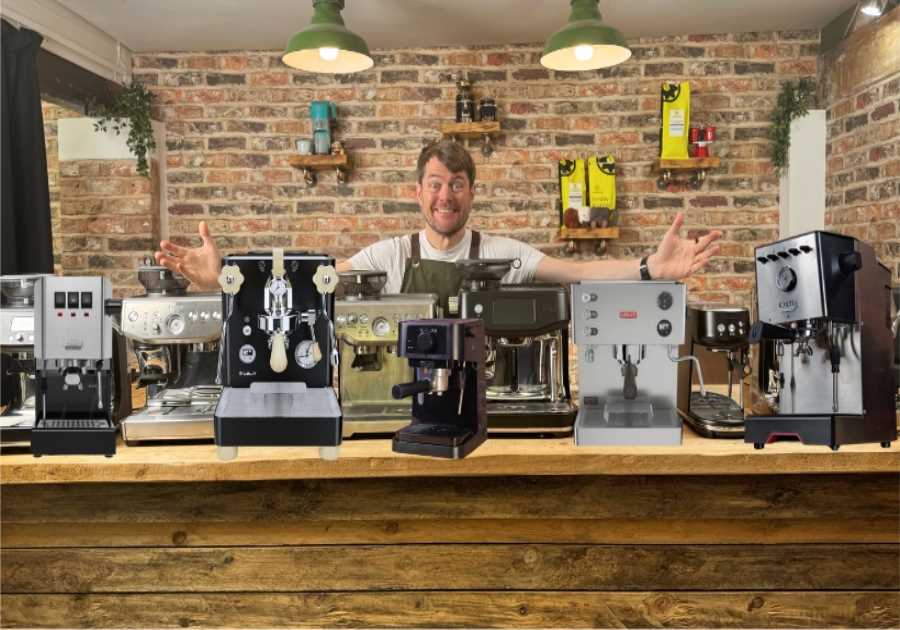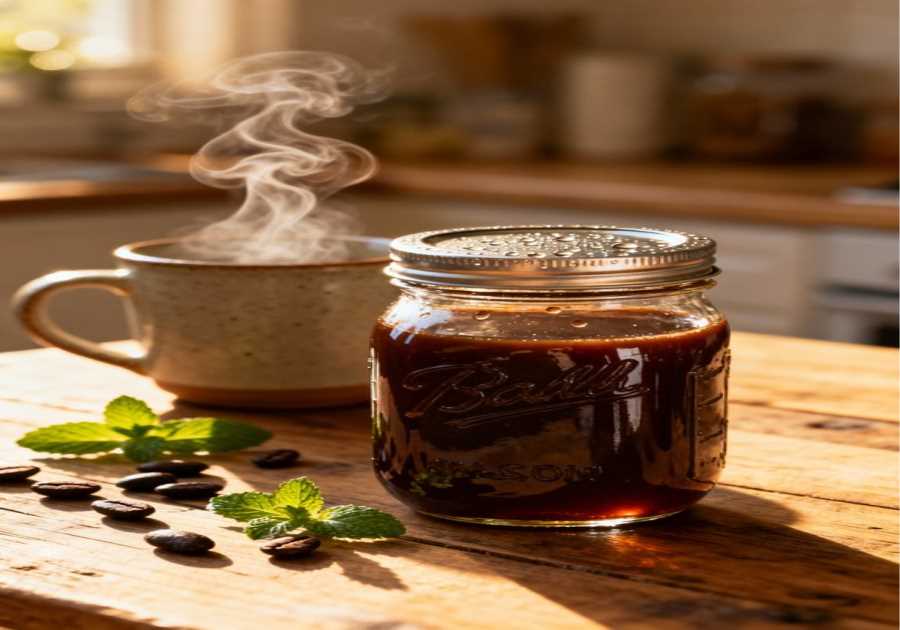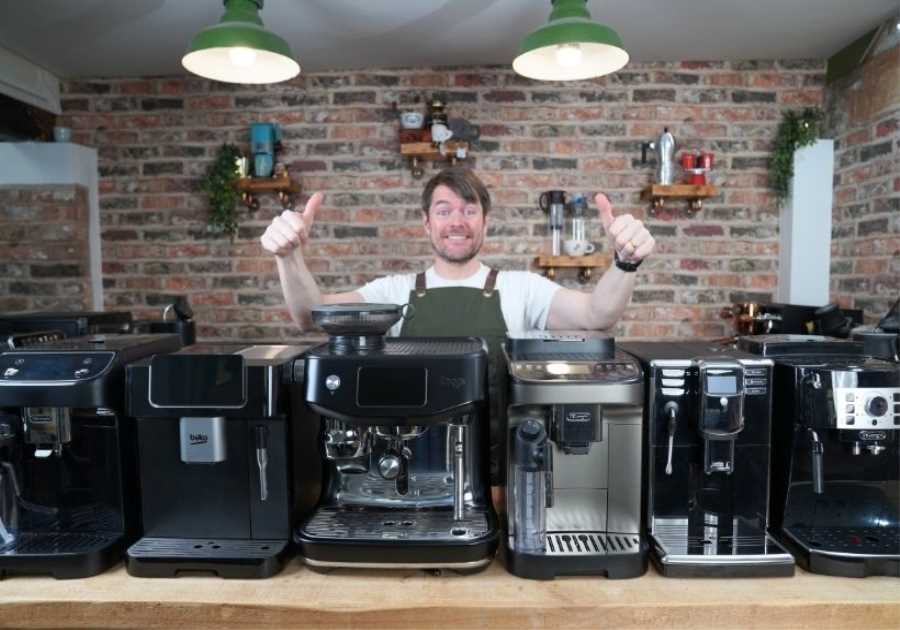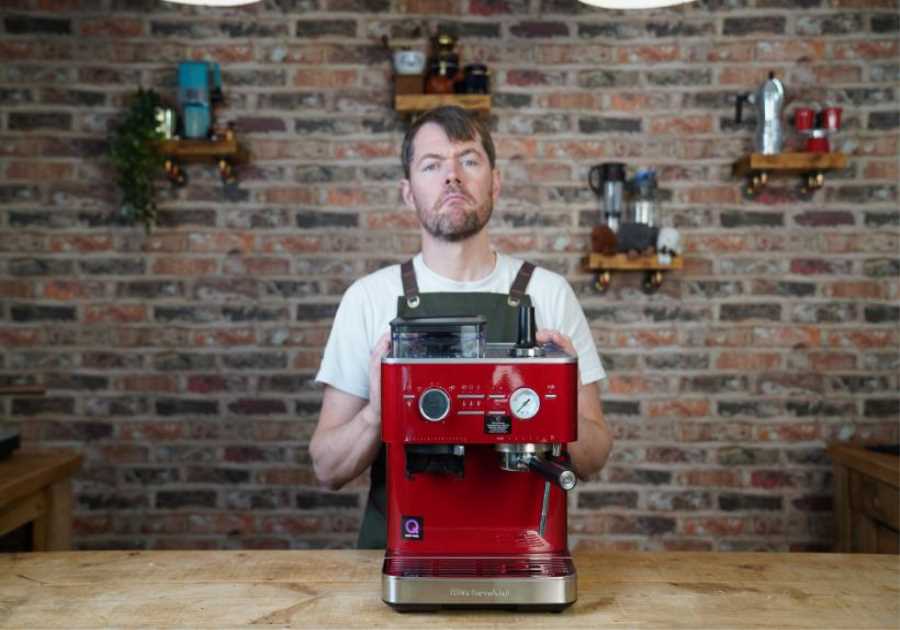It certainly seems that cold brew has become a permanent fixture in specialty coffee. By 2025, the value of the global cold brew market is set to increase by over US $1 billion. This represents a staggering compound annual growth rate of 26.44%.
However, the rapid rise in cold brew’s popularity hasn’t been without its teething problems – largely related to food safety concerns. For example, in August 2022, the US Food and Drug Administration recalled 53 different beverage products due to possible microbial contamination. These included ready-to-drink cold brew drinks from popular specialty coffee roasters like Intelligentsia and Stumptown.
Although they are admittedly rare, food safety issues for cold brew can’t be ignored. And this applies to all manufacturers – ranging from large-scale operations to roasters and coffee shops which serve cold brew.
To learn more about cold brew production and food safety regulations, I spoke to Alessandro Colombo, a roaster at Caffè Rinaldi, and Randy Anderson, a cold brew consultant and expert. Read on to learn what they had to say.
You may also like our article on why cold brew tastes different to other coffee brewing methods.

Cold brew’s booming popularity
It’s been impossible to ignore the rise of cold brew in recent years. Many coffee shops around the world now prepare and serve a range of cold coffee beverages all year round, including cold brew.
Caffè Rinaldi is located in Rome, Italy. Alessandro says while many people still enjoy traditional caffè freddos in Italy (a shot of espresso served with ice and sugar), cold brew is steadily becoming more popular.
“People who come to our café and try cold brew usually come back for more,” he says. “As specialty coffee culture gains momentum in Italy, customers are enjoying new ways of drinking coffee. And this includes the aromatic complexity of cold brew.”
Randy Anderson is a US consultant who has over two decades of experience in the industry, and 11 years working with cold brew. He says that convenience is a key driver of the explosive growth of cold brew.
“All coffee shops and consumers need to do is open the fridge and take out a can, or dispense from a spout or container and then add ice and water (if you’re using a concentrate), and you have cold brew,” he tells me.
Randy also explains that you can easily order cold brew online, which helps to drive consumption even more. Additionally, it can be shelf stable and stored in the refrigerator once opened.
“More and more consumers have started to realise that cold brew is a really convenient and quality coffee option to have at home,” he adds.
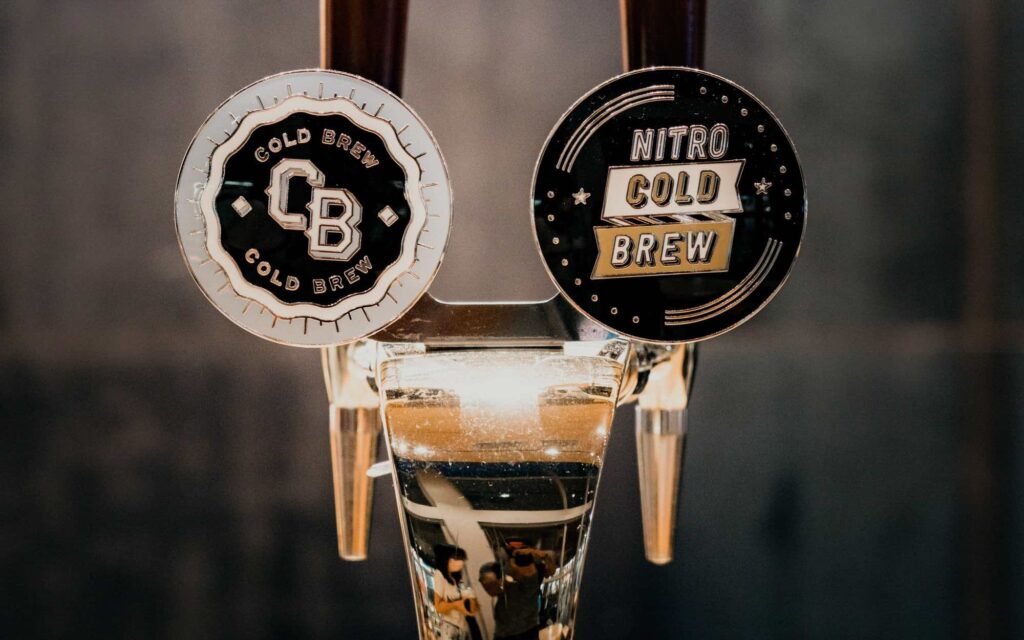
Different ways to prepare & serve cold brew
Today, there are various innovative ways to prepare cold brew – whether it’s small batch or larger commercial volumes.
Randy explains that a few years ago, most coffee shops would extract cold brew using a large plastic container. Baristas add ground coffee and water to the container, which are then left to steep at room temperature or lower for up to 24 hours.
Now, there are much more efficient and advanced ways to make cold brew – with some automated machines even taking just a few minutes. Alessandro says at Caffè Rinaldi, they use a Dripster cold brew maker, which includes an adjustable valve and steel filter – making it easier to control extraction.
“This method takes about two and a half hours to prepare cold brew,” he tells me.
While small-batch cold brew solutions are popular in coffee shops, Randy explains that larger manufacturers need to invest in much bigger and more efficient brewing systems to keep up with demand.
Commercial-grade refrigerated stainless steel brewers and containers are often the best choice for larger cold brew manufacturers. This is because they are insulated, which helps to better regulate brewing temperature.
Depending on the system used, these machines can prepare cold brew in as little as 30 minutes, with a total output of nearly 400l per day.
It then comes as no surprise that commercial cold brew systems can be expensive, which means coffee and beverage businesses should carefully consider which machines would work best for them.
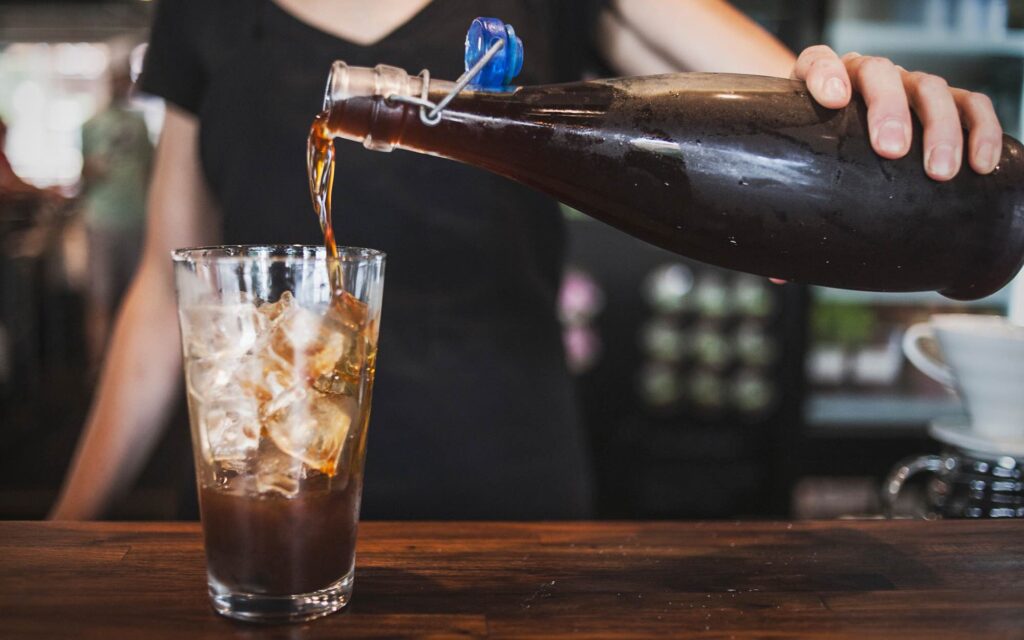
Understanding food safety rules
Generally speaking, there are fewer food safety concerns about hot brewed coffee and espresso. This is largely because you extract filter coffee and espresso drinks at higher temperatures within minutes or seconds. Moreover, people usually consume these drinks shortly after extraction – which reduces the likelihood of pathogen and bacteria development.
Cold brew preparation methods, however, generally take much longer – and take place at much lower temperatures. This increases the chances of bacteria like salmonella and E. coli developing in cold brew, which can be harmful to human health.
While there have been very few publicised cases of people becoming ill from drinking poorly prepared cold brew, coffee businesses still need to take as many precautions as possible.
“Cold brew has lower acidity levels and doesn’t come into contact with higher brewing temperatures, so it’s important to store it in the right environment,” Alessandro explains. “You need to store cold brew at the right temperature and away from direct sources of light.
“Spoiled cold brew loses its brightness, and takes on mouldy and unpleasant aromas and flavours,” he adds.
Randy has extensive experience with food safety procedures for cold brew. He recommends coffee shops to follow their local food health and safety procedures to remain compliant with regulations. First and foremost, he says this will ensure businesses won’t be forced to close or recall products.
“Most independent coffee shops don’t hire many staff who fully understand their local food health and safety regulations for cold brew,” Randy tells me. “They don’t realise that you have to handle cold brew carefully.
“Cold brew is a low acid beverage, and there are specific laws on how to handle low acid beverages,” he adds.

How to improve food safety procedures for preparing cold brew
Both Randy and Alessandro agree that incorrect brewing temperature and exposure to air pose the biggest health and safety risks to cold brew production.
Alessandro says he uses fresh cold water to prepare cold brew, but doesn’t use ice to better regulate brewing temperature.
Randy, meanwhile, asserts that any cold brew method which takes longer than two hours must be stored in a refrigerator. He recommends a brewing temperature between -1°C and 5.5°C (30.2°F to 41.9°F).
To avoid any mould or bacteria growth, cold brew should be consumed within three weeks of preparation. Alternatively, you can also freeze cold brew in a container with around 5% extra head space to allow for the expansion of the liquid.
Brewing guidelines
Randy says the following brewing tips will help to ensure maximum food health and safety regulations when making cold brew:
- Mix the ground coffee and water thoroughly to ensure all grounds are evenly saturated
- Avoid agitating the grounds too much, or squeezing them
- Instead, gently massage the filter bag
He explains these steps prevent increases in turbidity, which is a measure of the level of particles in a liquid. As turbidity increases, the liquid becomes denser and less clear due to a higher concentration of light-blocking particles.
Furthermore, following the above steps means fines in coffee grounds are left undisturbed. Too much agitation of finer particles can lead to overextraction – creating more unpleasant and astringent flavours.
Lastly, Randy emphasises that cold brew must always be stored in an airtight container to minimise exposure to oxygen and bacteria, as well as other physical or chemical contaminants.
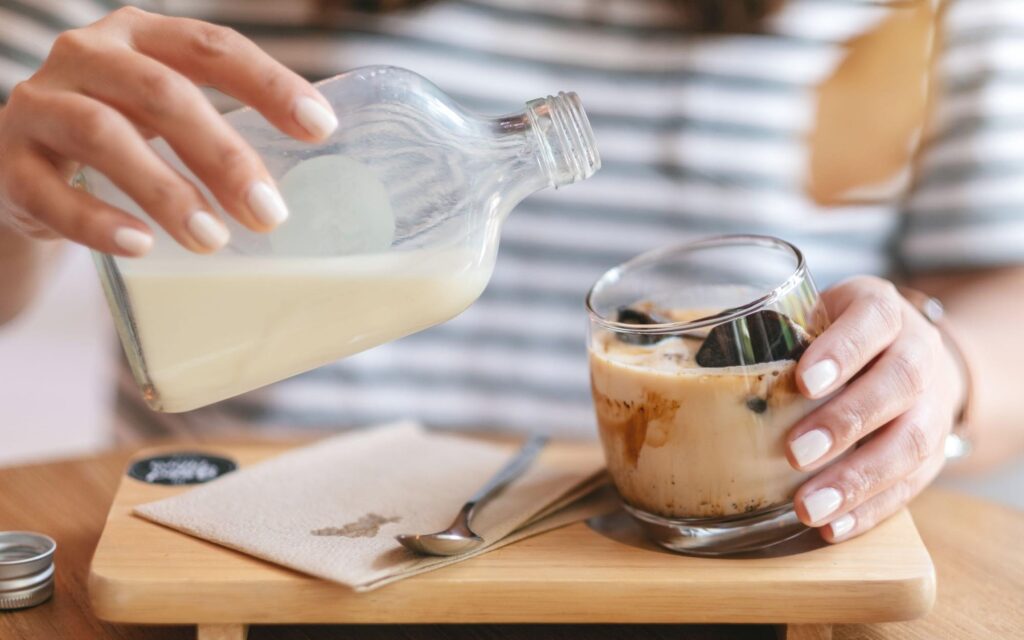
Whether a coffee business is just starting to produce cold brew, or has decided to scale current operations, food safety for cold brew is paramount.
In some cases, this means adopting more formalised brewing processes – which can take some time to implement correctly. A good place to start, however, is simply following standard food safety procedures and checking your local health and safety regulations.
Enjoyed this? Then read our article on choosing a coffee for cold brew.
Perfect Daily Grind
Want to read more articles like this? Sign up for our newsletter!
The post The coffee industry needs to take food safety for cold brew seriously appeared first on Perfect Daily Grind.
By: Janice Chinna KanniahTitle: The coffee industry needs to take food safety for cold brew seriously
Sourced From: perfectdailygrind.com/2023/10/cold-brew-safety/
Published Date: Mon, 23 Oct 2023 05:38:00 +0000

